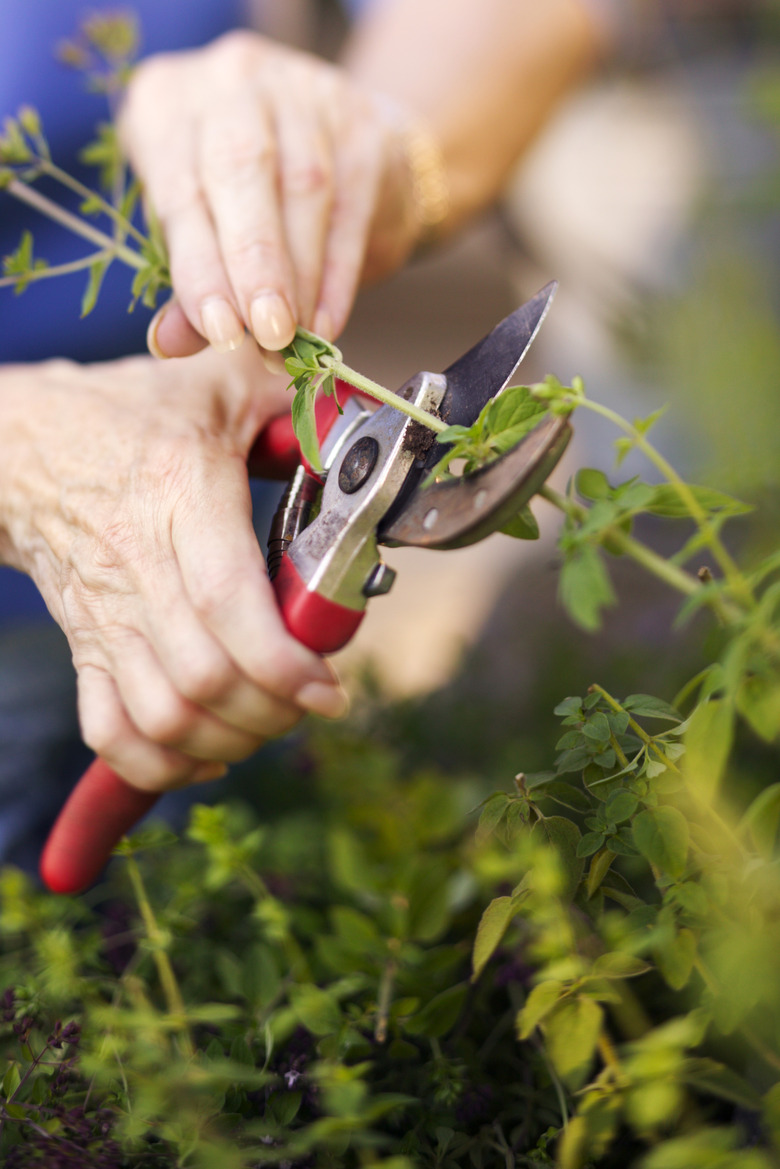Can You Trim Bushes When They're Wet?
Approach trimming shrubs in the garden as an "as-needed" task, not one to repeatedly conduct to limit the plant's health and vitality. Pruning maintenance shouldn't be viewed as the only way to correct neglect or bad plant selection. Trim shrubs to remove dead or diseased tissues or to shape the plant. Don't prune arbitrarily as a means to keep a large-growing shrub very small and stressed. Precise timing of pruning shrubs, especially flowering types, varies by species. If given the choice, aim to conduct all trimming tasks when the shrubs are dry.
Disease Concerns
The most pressing concern of trimming shrubs when they're wet after rains or irrigation is the threat of spreading disease. Fungal spores in particular are more readily spread when leaves and stems remain wet. Once branches are cut and a fresh wound is exposed to air, any water droplets carrying fungal spores or other disease remnants can rest on the wounds. The higher humidity slows the callusing of the wound, allowing more time for the diseases to enter or multiply atop the wound and harm healthy plant tissues. Slow callusing can increase tissue rot. The pruning tool itself can be the vector by which the disease spreads across the wet plant tissues.
Change in Plant Form
When shrubs are leafed out from spring to fall, moisture on leaves and stems adds weight to the branches. After a heavy rain, the excess moisture can cause branches to droop or bow, changing the actual plant silhouette. If trimming maintenance is to shape the shrub, wait until the leaves and stems dry off and return upright to a more indicative structure and habit. This lets you cut back branches uniformly to shape the shrub to the appropriate size and branch lengths.
Safety
Simply put, it's much more of a bother to trim shrubs when the garden is wet. Tool handles become slippery, and flopping branches flick water into your face or make your clothing uncomfortable. Wet branches may be difficult to grasp and hold steady while you're evaluating their health and where to make the pruning cut. Since pruning blades are sharp and readily cut into fingers when the blades close, it's safer to wait until the landscape is drier and your tactile awareness and overall grip on tools is consistent. Wetness on the pruning blades hastens wear on them and can lead to rusting that affects their usability.
Tips
If possible, wait until the shrubs air-dry before starting substantial trimming projects. A quick clipping of one or two branches may be easy to complete. On windy days, foliage and stems dry off more quickly. Gently shake shrubs to jar water droplets to the ground to decrease the amount of time needed before the plants dry. To further diminish the possibility of spreading disease when pruning, douse cutting blades with a 10-percent bleach solution between cuts to sterilize the blades. Bring dry paper towels or rags with you to frequently dry your hands and the pruning tools to ensure that your grip is always steady and strong.
